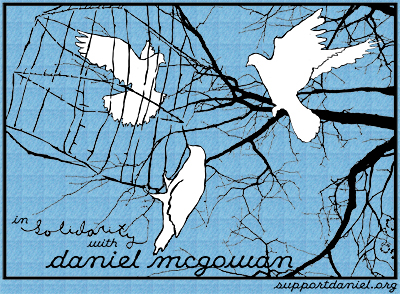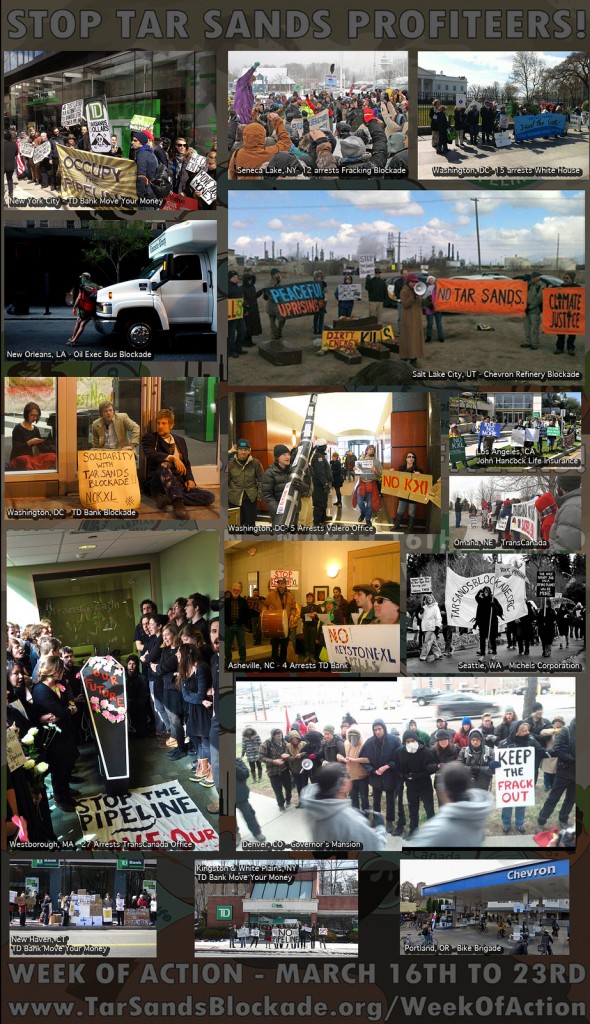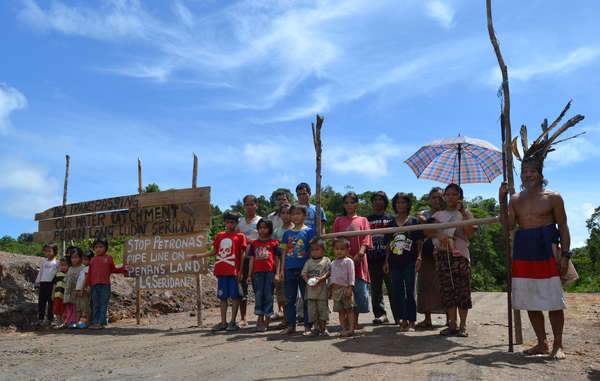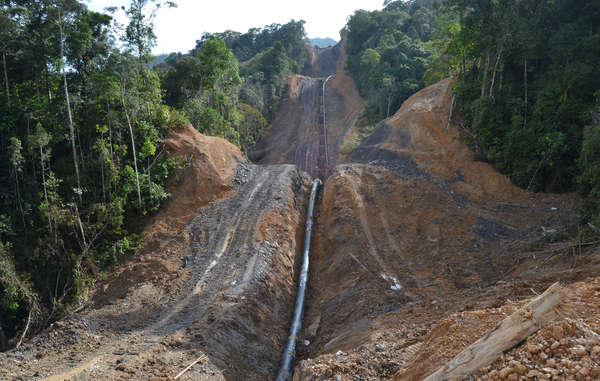by Daniel McGowan
I currently reside at a halfway house in Brooklyn, serving out the last few months of a seven-year sentence for my role in arsons credited to the Earth Liberation Front (ELF) at two lumber companies in Oregon in 2001. My case, and the federal government’s rush to prosecute environmental activism as a form of terrorism, were recently explored in the Oscar-nominated documentary, If a Tree Falls: A Story of the Earth Liberation Front.
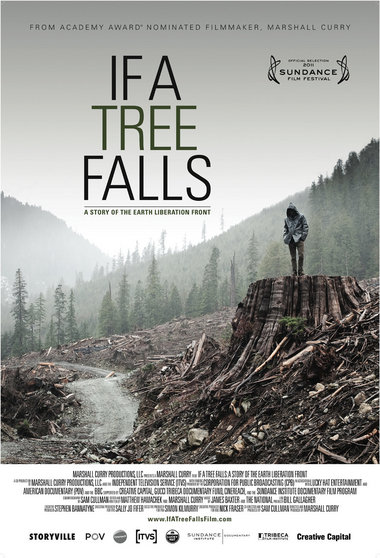 What has received less attention, though, is what happened to me while in federal prison. I was a low security prisoner with a spotless disciplinary record, and my sentencing judge recommended that I be held at a prison close to home. But one year into my sentence, I was abruptly transferred to an experimental segregation unit, opened under the Bush Administration, that is euphemistically called a “Communication Management Unit” (CMU). Since August 2008, when I first arrived at the CMU, I have been trying to get answers as to why I was singled out to be sent there. Only now — three years after I filed a federal lawsuit to get to the truth — have I learned why the Federal Bureau of Prisons (BOP) sent me to the CMU: they simply did not like what I had to say in my published writing and personal letters. In short, based on its disagreement with my political views, the government sent me to a prison unit from which it would be harder for me to be heard, serving as a punishment for my beliefs.
What has received less attention, though, is what happened to me while in federal prison. I was a low security prisoner with a spotless disciplinary record, and my sentencing judge recommended that I be held at a prison close to home. But one year into my sentence, I was abruptly transferred to an experimental segregation unit, opened under the Bush Administration, that is euphemistically called a “Communication Management Unit” (CMU). Since August 2008, when I first arrived at the CMU, I have been trying to get answers as to why I was singled out to be sent there. Only now — three years after I filed a federal lawsuit to get to the truth — have I learned why the Federal Bureau of Prisons (BOP) sent me to the CMU: they simply did not like what I had to say in my published writing and personal letters. In short, based on its disagreement with my political views, the government sent me to a prison unit from which it would be harder for me to be heard, serving as a punishment for my beliefs.
The first of the two CMUs was opened quietly, without the public scrutiny required by law, in 2006 in Terre Haute, Indiana; the Marion, Illinois CMU followed in 2008. In fact, at a hearing in my case before I was sentenced, my attorneys argued that giving me the “terrorism enhancement” could result in my designation to a CMU. How right they were! The units are designed to isolate prisoners from the rest of the prisoner population, and more importantly, from the rest of the world. They impose strict limitations on your phone calls home and visits from family and friends — you have far less access to calls and visits than in general population. The communications restrictions at the CMUs are, in some respects, harsher than those at ADX, the notorious federal “Supermax” prison in Colorado. Also, unlike ADX, they are not based on a prisoners’ disciplinary violations. When my wife and loved ones visited me at the CMUs, we were banned from any physical contact whatsoever. All interactions where conducted over a telephone, with Plexiglas and bars between us. Until they were threatened with legal action, CMU prisoners were only allowed one single 15-minute phone call per week.
This is very different from most prisons. I started my sentence at FCI Sandstone — a low security facility in Minnesota. I never received a single incident report the whole time I was there and stayed in touch with my family by phone and through visits. The importance of maintaining these family connections cannot be overstated. My calls home were, for example, the only way I could build a relationship with my then two-and-a-half year old niece. When my family would visit, it was incredibly important to all of us to be able to hug and hold hands in a brief moment of semi-normalcy and intimacy. It was these visits that allowed us to maintain our close contact with each other through a time of physical disconnection, trauma and distress.
What’s also notable about the CMUs is who is sent there. It became quickly obvious to me that many CMU prisoners were there because of their religion or in retaliation for their speech. By my count, around two-thirds of the men are Muslim, many of whom have been caught up in the so-called “war on terror,” others who just spoke out for their rights or allegedly took leadership positions in the Muslim community at other facilities. Some, like me, were prisoners who have political views and perspectives that are not shared by the Department of Justice.
While serving my time I was eager to stay involved in the social justice movements I care about, so I continued to write political pieces, some of which were published on this website [the Huffington Post]. No one in the BOP ever told me to stop, or warned me that I was violating any rules. But then, without a word of warning, I was called to the discharge area one afternoon in May 2008 and sent to the CMU at Marion. Ten days after I arrived, still confused about where I was and why, I was given a single sheet of paper called a “Notice of Transfer.” It included a few sentences about my conviction, much of which was incorrect, by way of explanation for my CMU designation. I was provided no other information about why the BOP believed I needed to be sent to this isolation unit. Frustrated, I filed administrative grievances to try to get the information corrected, and find out how this decision had been made. When that did not work, I filed a request for documents under the Freedom of Information Act. I got nowhere. The BOP would not fix the information, and wouldn’t explain why they thought I belonged in a CMU.
So I decided to contact lawyers at the Center for Constitutional Rights, having known their history of strong advocacy on these issues. We brought a federal lawsuit on behalf of myself and other CMU prisoners to challenge policies, practices and our designation to the CMUs. The lawsuit, Aref v. Holder, was filed in April 2010, and challenges the constitutionality of various polices and practices at the CMUs, including the lack of meaningful process associated with designation to the units, and the lack of any meaningful way to “step down” from the units. The lawsuit contends that this lack of transparency and process has allowed people to be sent to the CMUs based on, for example, their protected speech. Through discovery in the case, the federal government has finally been forced to hand over previously-unseen memoranda explaining why I was picked out to be sent a CMU. Authored by Leslie Smith, the Chief of the BOP’s so-called “Counter Terrorism Unit,” and cataloging in detail some of the things I have said in the past years, they make one thing clear: I was sent to the CMU on the basis of speech that the BOP just disagrees with.
The following speech is listed in these memos to justify my designation to these ultra-restrictive units:
My attempts to “unite” environmental and animal liberation movements, and to “educate” new members of the movement about errors of the past; my writings about “whether militancy is truly effective in all situations”; a letter I wrote discussing bringing unity to the environmental movement by focusing on global issues; the fact that I was “publishing [my] points of view on the internet in an attempt to act as a spokesperson for the movement”; and the BOP’s belief that, through my writing, I have “continued to demonstrate [my] support for anarchist and radical environmental terrorist groups.”
The federal government may not agree with or like what I have to say about the environmental movement, or other social justice issues. I do not particularly care as the role of an activist is not to tailor one’s views to those in power. But as Aref v. Holder contends, everything I have written is core political speech that is protected by the First Amendment. It may be true that courts have held that a prisoner’s freedom of speech is more restricted than that of other members of the public. But no court has ever said that means that a prisoner is not free to express political views and beliefs that pose no danger to prison security and do not involve criminal acts. In fact, decades of First Amendment jurisprudence has refused to tolerate restrictions that are content-based and motivated by the suppression of expression. And courts have recognized that when a prisoner is writing to an audience in the outside world, as I was, it’s not just the prisoner’s First Amendment rights that are at stake: the entire public’s freedom of speech is implicated.
I do not know what is happening with the men I got to know in the CMUs but I know they are still dealing with everything I had to deal with — isolation from the outside world, strained relationships, always being on eggshells about the constant surveillance and never knowing when they will get out of the CMU.
It is becoming increasingly clear that the BOP is using these units to silence people, and to crack down on unpopular political speech. They have become units where the BOP can dump prisoners they have issues with or whose political beliefs they find anathema. In the months that come, with CCR’s help, I hope to prove that in court and show what is happening at the CMUs. This needs to be dragged into the sunlight.
Follow Daniel McGowan on Twitter: www.twitter.com/@thetinyraccoon


